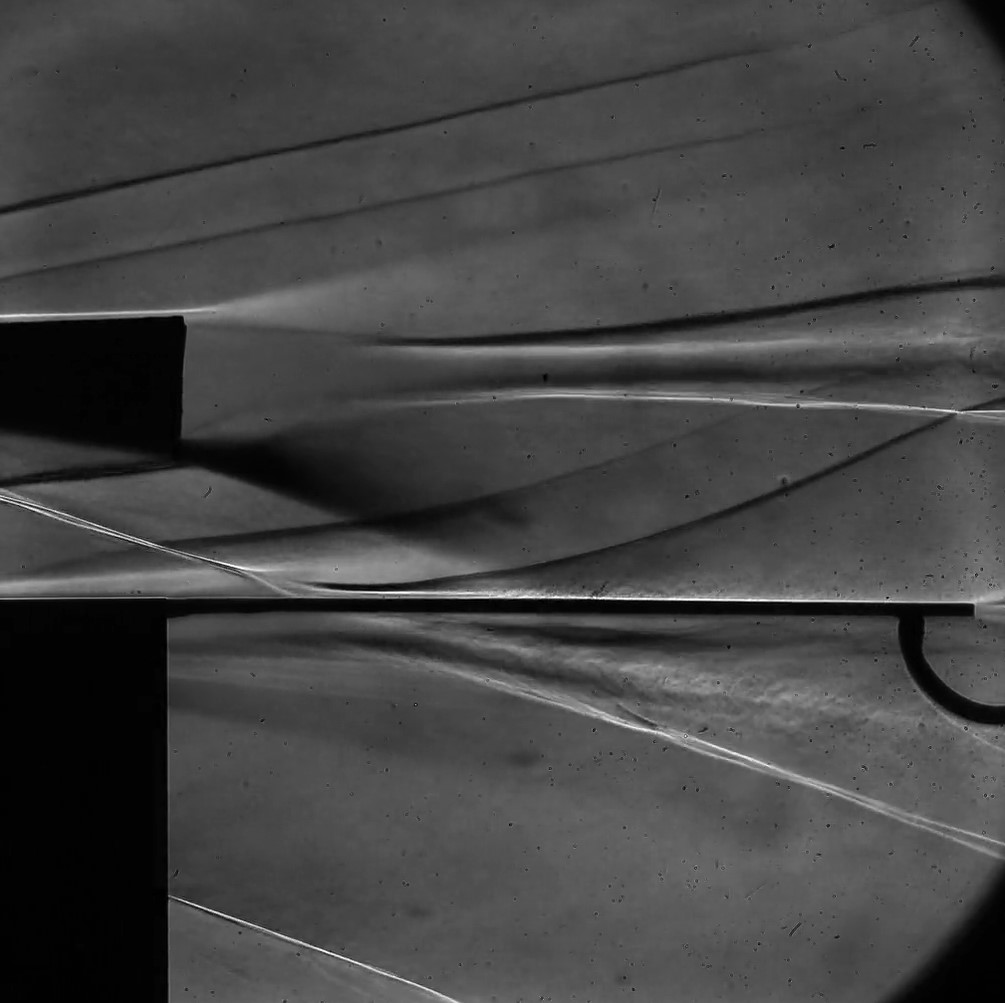

A UNSW Canberra hypersonics experiment has been selected as a test case for a NASA-organised workshop in the United States next year.
The Aeroelastic Prediction Workshops bring together an international community of engineers and researchers who use computer simulations to model the complex physics of aeroelasticity and fluid-structure interactions (FSI).
Next year’s event, AePW3, is the third workshop in the series and the first time that high-speed cases have been included.
The two test cases chosen for the international community to simulate are UNSW Canberra’s Hypersonic Multibody Aeroelastic eXperiment (HyMAX) and the US Air Force Research Lab’s FC-19.
UNSW Canberra experiment lead Professor Andrew Neely said members of the international FSI research community will simulate the experiment based on knowledge of the wind tunnel conditions and of the model geometry.
They will then use their respective computer modelling approaches and simulation codes to predict the dynamic response of the test cases during the experiment. At the workshop, the participants’ results will be compared with the original experimental measurements.
“This is a fundamental study of the complex coupled physics that will influence how a hypersonic vehicle will distort in flight due to the extreme aerodynamic and thermal loads that it is subjected to,” Professor Neely said.
“It will help inform the development of computational tools to help confidently and efficiently design these vehicles.”
Professor Neely explained that vehicles that fly at supersonic and hypersonic speeds are subjected to aerothermal heating, which reduces the stiffness and the strength of the airframe, making the structure more susceptible to strong FSI.
“In certain cases, if this FSI coupling is not naturally damped out it can lead to reduced aerodynamic performance, structural fatigue and thus reduced life of the vehicle and potentially catastrophic failure,” he said.
“Industry therefore needs accurate and efficient numerical tools to confidently design the structures of these weight-sensitive vehicles for applications ranging from high-speed transport to reusable space launch to military systems.”
The HyMAX experiment grew out of the University’s research on hypersonic FSI, funded by both the Australian Research Council and the US Air Force Office of Scientific Research.
In these projects, the team has been developing high-quality, first-of-kind experimental test cases of fundamental structural configurations undergoing FSI in hypersonic flows.
“HyMAX is a compliant, trailing edge cantilevered plate undergoing shock boundary layer interaction (SBLI) by an impinging shock wave that can be fixed or free to oscillate to vary the strength of the SBLI,” Professor Neely said.
“This non-uniform pressure distribution above and below the cantilever plate cause it to undergo FSI and dynamically vibrate.
“The initial version of the HyMAX model was developed by my past PhD student, Gaetano Currao. The experiment was then refined by my Research Engineer, Liam McQuellin, and most recently my Postdoctoral Research Associate (and now a full member of academic staff) Dr Krishna Talluru has been leading the data analysis. Liam and Krishna together performed the most recent version of the HyMAX experiments.”
The challenge problems were circulated to the scientific community in January 2022 and the workshop will be held at the AIAA SciTech conference in Maryland, United States in January 2023. Find out more about the workshop here.
Read more:
Ask an expert: What is hypersonics?
